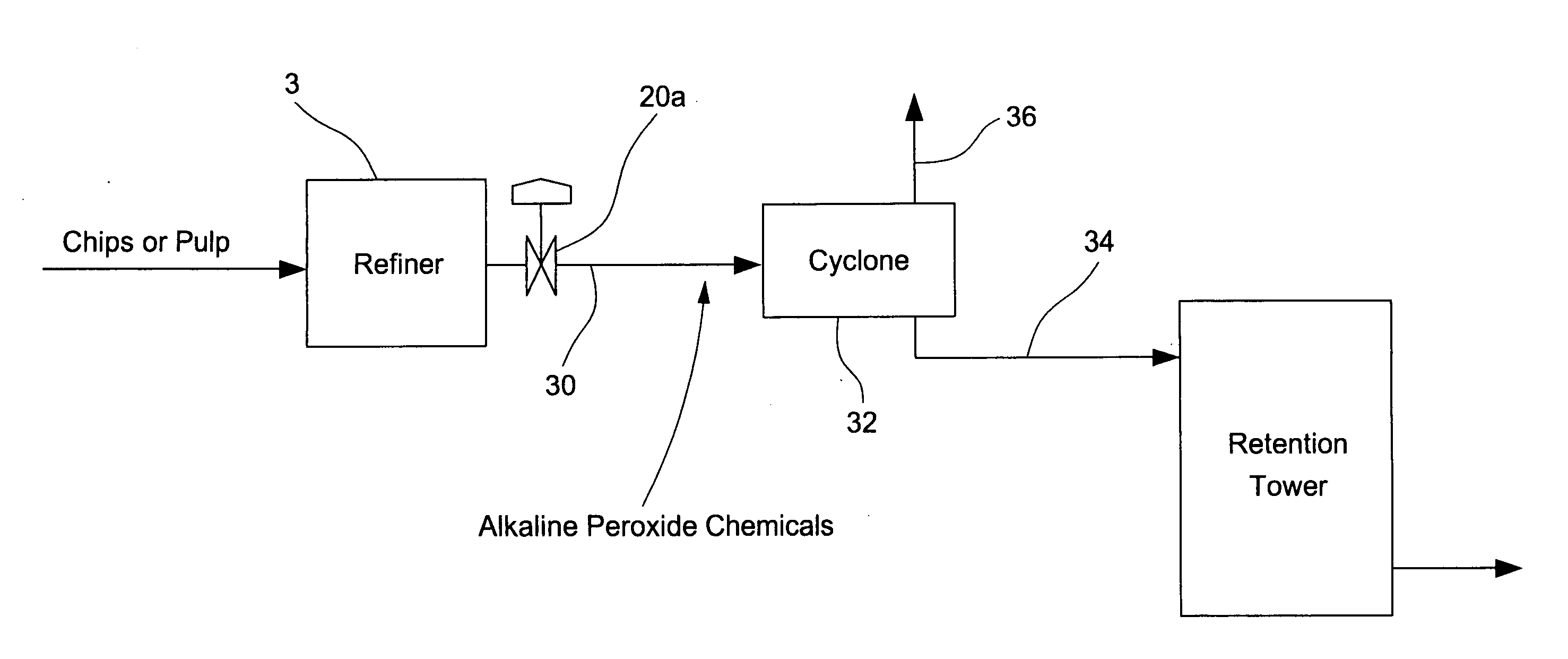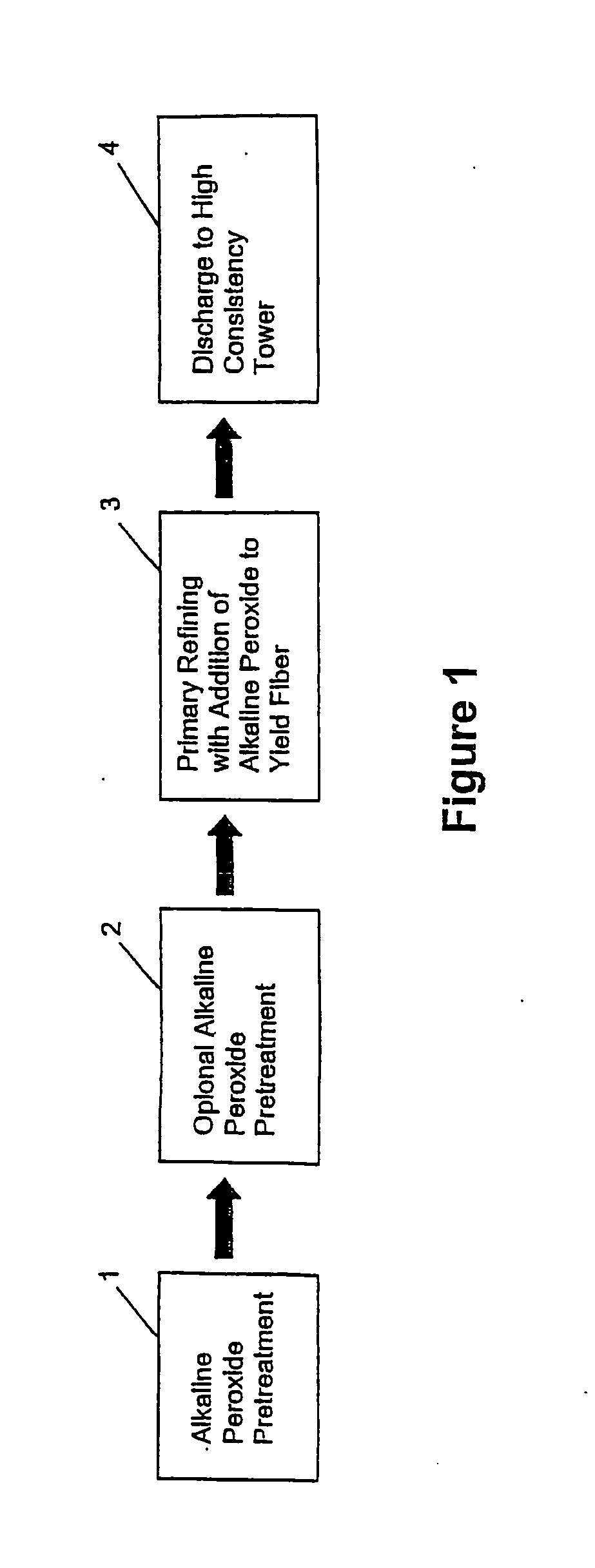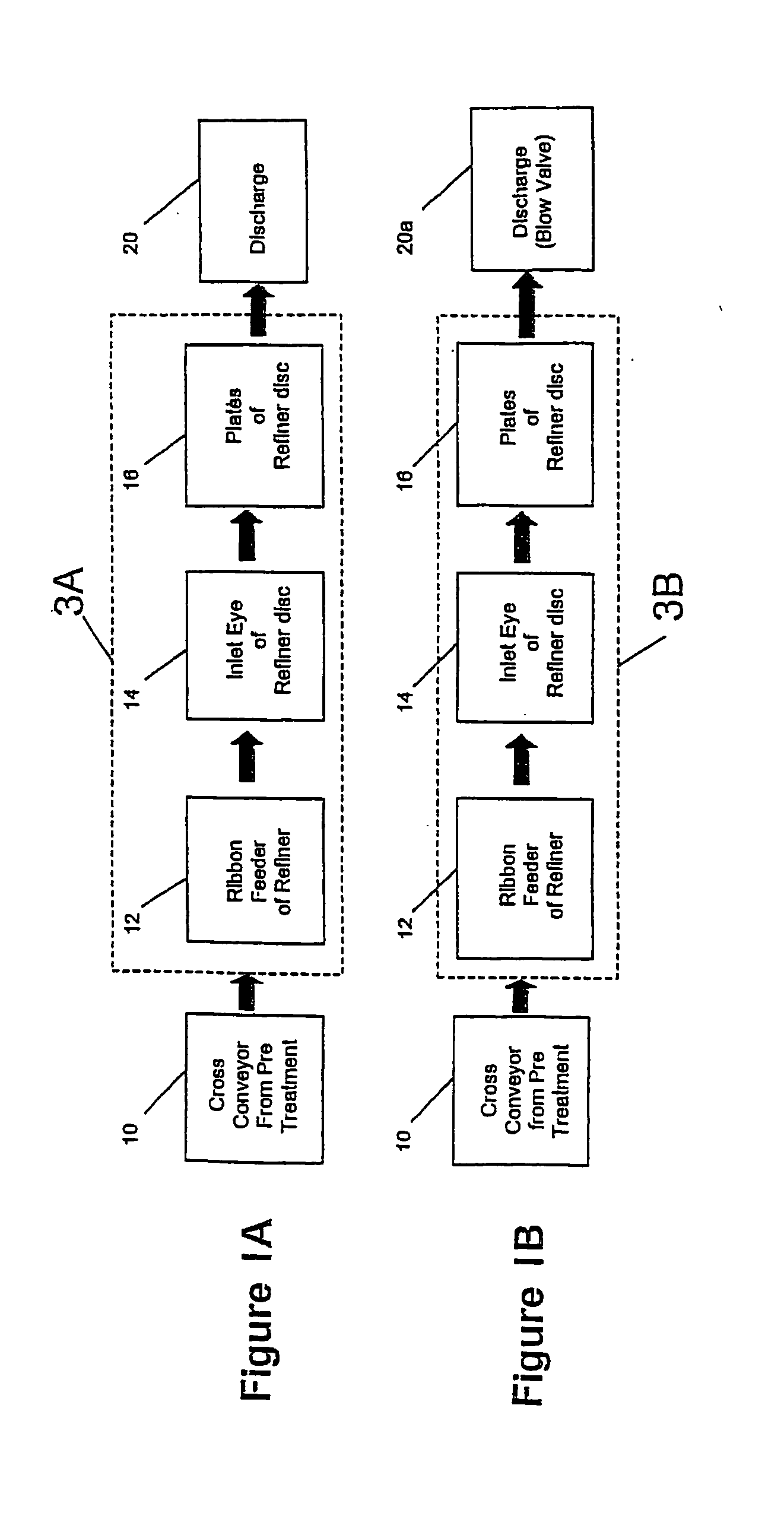Multi-stage AP mechanical pulping with refiner blow line treatment
a technology of mechanical pulping and blowing line treatment, which is applied in the direction of finely divided material pretreatment, grain treatment, manufacturing tools, etc., can solve the problems of scale forms on the processing equipment, glassing of the refiner plate, and the refiner area itself can also suffer, so as to improve the chemical efficiency, improve the efficiency of the process, and influence the brightness and development of the pulp
- Summary
- Abstract
- Description
- Claims
- Application Information
AI Technical Summary
Benefits of technology
Problems solved by technology
Method used
Image
Examples
example set a
[0057]Several general series of pilot plant processes are illustrated in the following examples. The materials and conditions for the following examples, unless specified otherwise are:
[0058]Wood: A blend of 50% aspen and 50% basswood was used in this study. The aspen woods had rotten centers, which made it more difficult to bleach than normally expected. The woods were all from Wisconsin USA, and debarked, chipped and screened before further processing.
[0059]Chemical Impregnation: Chips were pre-steamed first for 10 minutes, and then pressed using an Andritz 560GS Impressafiner at 4:1 compression ratio before impregnated with alkaline peroxide chemical liquor. The chemical liquor was introduced at the discharge of the press, and allowed for 30 minutes retention time before refining.
[0060]Refining: An Andritz 92 cm (36″) Model 401 double disc atmospheric refiner at a conventional speed of 1200 rpm was used for all the refining processes. There was 15 minutes or more retention time b...
example set b
[0071]The below examples illustrate a different refining configuration where the primary refiner was maintained at a negligible gauge pressure at the inlet and a low pressure (approximately 140 kPa) at the casing. Advantages of this configuration include:
[0072]1) better steam handling at the refiner discharge, especially for high capacity refiners (300 t / d or higher);
[0073]2) ease of transfer primary pulp from the refiner to the interstage high consistency (HC) tower;
[0074]3) a potential to use some of the steam generated from the primary refining (by using a cyclone to separate steam and pulp fiber);
[0075]4) ease of converting existing TMP systems into a P-RC APMP process.
[0076]These examples show that running the primary refiner at a low pressure (140 kPa) in the casing and atmospheric at the inlet can give similar bleaching efficiency as that of atmospheric at both the inlet and the casing. Temperatures at the inlet and between the plates in the primary refiner may push the chrom...
example set c
[0088]This example set shows, among other things, that when the chemical recipe and distributions are optimized, the alkali peroxide chemicals at refiner chemical treatment stage can be applied at the intermediate line in a pressurized refiner system to achieve similar bleaching efficiency as P-RC APMP with conventional atmospheric inlet pressure. Because the residence time is very short in a intermediate line, the same process may also be used in a high pressure refining system, for example a refining system operating at 4 bar or higher.
Wood
[0089]All the hardwoods (birch and maple) were received in chip form and mixed separately before being further processed. All the softwoods (spruce, pine and softwood blends) were received in log form, and debarked, chipped and mixed prior to further processing.
Chip Impregnation
[0090]The wood chips, unless otherwise specified, were impregnated twice with AP chemicals (consisting of sodium hydroxide (NaOH), hydrogen peroxide (H2O2), DTPA, Magnesi...
PUM
| Property | Measurement | Unit |
|---|---|---|
| temperature | aaaaa | aaaaa |
| pressure | aaaaa | aaaaa |
| temperature | aaaaa | aaaaa |
Abstract
Description
Claims
Application Information
 Login to View More
Login to View More - R&D
- Intellectual Property
- Life Sciences
- Materials
- Tech Scout
- Unparalleled Data Quality
- Higher Quality Content
- 60% Fewer Hallucinations
Browse by: Latest US Patents, China's latest patents, Technical Efficacy Thesaurus, Application Domain, Technology Topic, Popular Technical Reports.
© 2025 PatSnap. All rights reserved.Legal|Privacy policy|Modern Slavery Act Transparency Statement|Sitemap|About US| Contact US: help@patsnap.com



